You can practically buy absolutely everything at Walmart, from cornflakes to toys, and at good prices, too. Unsurprisingly then, with thousands of stores spread across the US, they happen to also offer services of the automotive kind. If your car’s tires are running a bit old and worn, you might be curious to know how much a Walmart tire installation cost would be.
Tires are, understandably, a very important component of your car. The engine might be what creates the power, but the car wouldn’t be able to go anywhere without the tires.
So, it’s crucial for you to pay heed to that slice of rubber that sticks your car to the ground. Your tires might have been designed to last for a long time, but eventually, they will need replacing.
So, should it matter that Walmart offers tire services? Are they any good, and is Walmart really the best around when it comes to pricing? After all, you can find similar services offered by countless mom-and-pop workshops and dedicated tire stores.
Or, you could even consider trying to rent a garage to work on a car, DIY-style. Well then, come and read along with our Walmart tire installation cost guide to learn more about why Walmart is actually a pretty decent place to get your tires replaced.
Walmart Tire Installation Cost – ...
Please enable JavaScript
Walmart Tire Installation Cost – How Does It Stack Up Against The Rest?
Before we dive deeper into our Walmart tire installation cost guide and comparison, there are a few things we need to get out of the way first. Firstly, we need to help you understand if you need to replace your tires at all. I mean, if your car is moving, then the tires should be working in order, right? Well, it’s more complicated than it seems on the surface.
Your car’s tires are designed to last for a long time. Most tires generally have a lifespan of between 5 to 10 years at most. However, a tire undergoes an immense amount of strain. Eventually then, depending on your driving, usage, and external factors, they will need replacing. Sometimes, this would happen sooner rather than later.
The importance of your car’s humble tires is often overlooked when it comes to general maintenance. So, to give you a better idea, we’ve compiled a short list of things that causes general wear and tear on tires. These are among some of the more common causes that will result in tire degradation.
Naturally, nothing in this world is designed to last forever. Tires, too, are no different. As good as they may be, tires will eventually start aging. It relates to the degradation of the structural integrity of the rubber compound itself. This wearing-off process can happen even if you don’t drive your car often.
The weather around you is another cause for your tires to wear out. Once again, this is down to the structure and compound of the rubber. Extreme changes in temperature will cause the tire to undergo intense wear and tear.
This is because the rubber needs to constantly adjust its properties to better put traction down on the ground. Driving in conditions that are too hot, or too cold will also have an impact on your car’s tires.
A tire is not just a tool for transferring power from the engine to the ground. But by being in contact with the ground, it also absorbs a lot of the impact while driving. That is unless you’re lucky enough to be driving along the creamy smooth tarmac of the German Autobahn every day.
Driving into potholes, cracks, and speed bumps too often will put a lot of stress and wear on the tires. That’s not to mention driving over cobbled or graveled roads frequently. And, don’t forget the occasional curbing or driving over debris like nails or stones.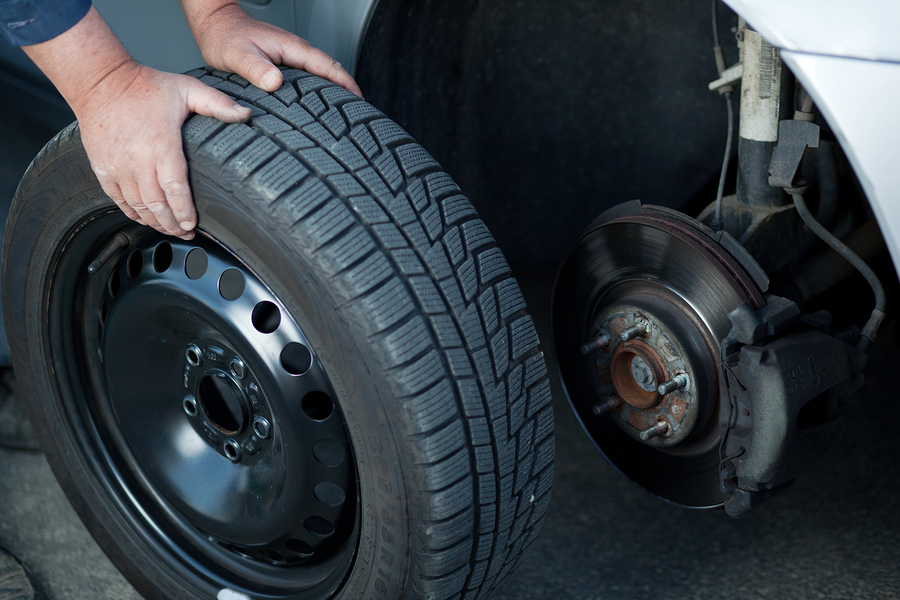 These can be very detrimental to the health of your car’s rubber.
These can be very detrimental to the health of your car’s rubber.
This is one of the easiest ways for you to prevent excess wear on your car’s tires. Your driving style is integral in making sure the rest of your car, not just the tires, remains in serviceable condition. Drive carefully and moderately, and you can very easily aid in extending the lifespan of your car’s tires.
Driving too fast, with smoky acceleration, or locking up your wheels under braking is a quick and easy way to cause tire wear. Oh, and there’s also the exuberant driving, power slides, or rapid changes in direction. Then, there’s the amount of load that you’re carrying with the car, which will also cause greater wear and tear over time.
As with every other component in your car, tires need adequate maintenance and looking after to make sure it stays in good shape. Always remember to keep on top of how your tires are doing, such as by checking the air pressure.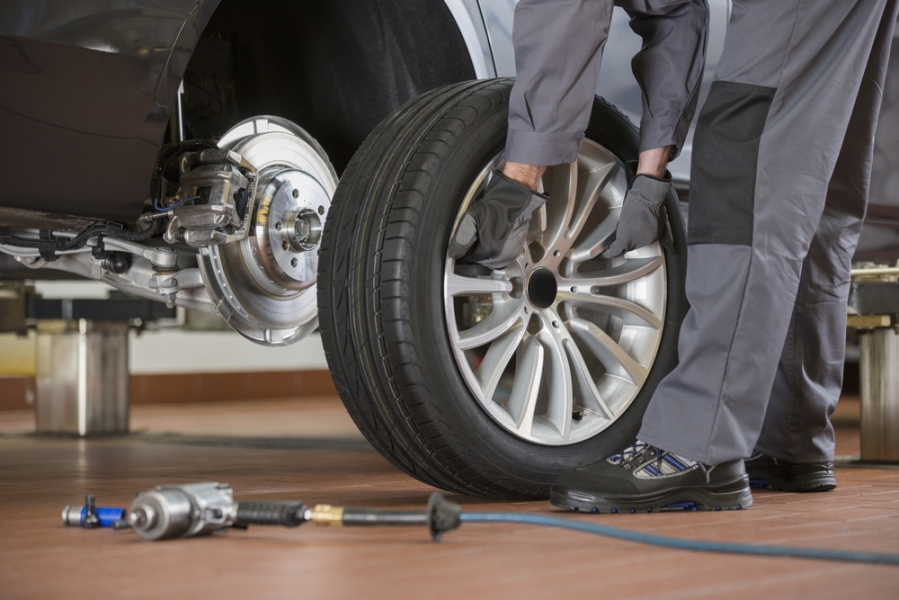 Usually, you can do this yourself using simple tire pressure gauges.
Usually, you can do this yourself using simple tire pressure gauges.
So, does it matter what does low tire pressure mean? Low air pressure will increase rolling resistance, which will not only impact fuel efficiency and comfort but also your tire’s condition. This is crucial to understand if you’re trying to figure out tire inflation.
Then, there’s the case of making sure you don’t have bad wheel alignment and that it’s balanced. Poorly aligned or unbalanced tires can cause the load to be spread unevenly. This causes more wear in some parts of the tire than in others. Simple check-ups every now and then go a long way in keeping your tires healthy and happy.
For instance, you might be wondering about what causes your tire to wear on the inside. The latter is also known as inner tire wear, as well as inside tire wear. Alternatively, you might be noticing how only the outside of the front tires are wearing.
Okay, so now we know the causes of tire wear and tear. But now you might be asking yourself whether you really need to have your tires replaced. There are, thankfully, some easy signs for you to notice. So, pay attention to these clear symptoms to know if you need to have your tires replaced.
Understanding these will better help us guide you along with knowing the extent of a Walmart tire installation cost. Besides, it’s important and normal for you to change your tires.
Driving with poor tires will cause more wear and tear on other parts of the car. Moreover, it will result in a more uncomfortable ride and poor fuel economy. Even worse, it might result in an accident, as the tires fail or lose traction.
This is a clear sign that your car’s tires have not been aligned, or you have unbalanced tires. As a result of this, your car’s tires are not spreading the load evenly. You can take a closer look at your tires, and see if one side of the tire is wearing out faster than the other parts. For example, if the outer wall of the tires is running bald faster.
As a result of this, your car’s tires are not spreading the load evenly. You can take a closer look at your tires, and see if one side of the tire is wearing out faster than the other parts. For example, if the outer wall of the tires is running bald faster.
Tires have treads, or grooves, to provide optimal amounts of traction on the road. These grooves will eventually wear out. You can try running your fingers, or a coin across the car’s grooves. If the treads are becoming shallow, or worse, have gone completely bald, then this is a good sign that you need to have your tires replaced.
A car’s tires are able to transmit a lot of feedback back to you, the driver. Among them is the condition and state of the tire itself. If you notice any vibrations while driving, mostly felt through the steering wheel, then your tires might be damaged.
Notice as well, if the car is running a bit hard and rough compared to usual. Or, try to hear if there are any odd noises while driving along. A ‘clinking’ sort of sound might indicate that something is lodged in your car’s tires. Maybe it’s a small stone or a nail that has punctured through the rubber.
Or, try to hear if there are any odd noises while driving along. A ‘clinking’ sort of sound might indicate that something is lodged in your car’s tires. Maybe it’s a small stone or a nail that has punctured through the rubber.
Right, so now that we’ve understood what can cause tire wear and whether you need to replace them, we can get into the meat of our guide here. Our question is as to how much a Walmart tire installation costs. The simple answer; is $15 per tire for its basic tire installation package. So, if you do your math right, that should be $60 for a whole set.
Under its ‘basic tire installation package’, Walmart will offer more than just mounting tires on your car. Included is a service for both the valve stems and your car’s TPMS. The latter stands for ‘tire pressure monitoring system‘. This package also includes lifetime tire balancing in the cost.
Also, Walmart will throw in a rotation every 7,500 miles (which is just about on par for how often to rotate your tires), and a lug re-torque after 50 miles.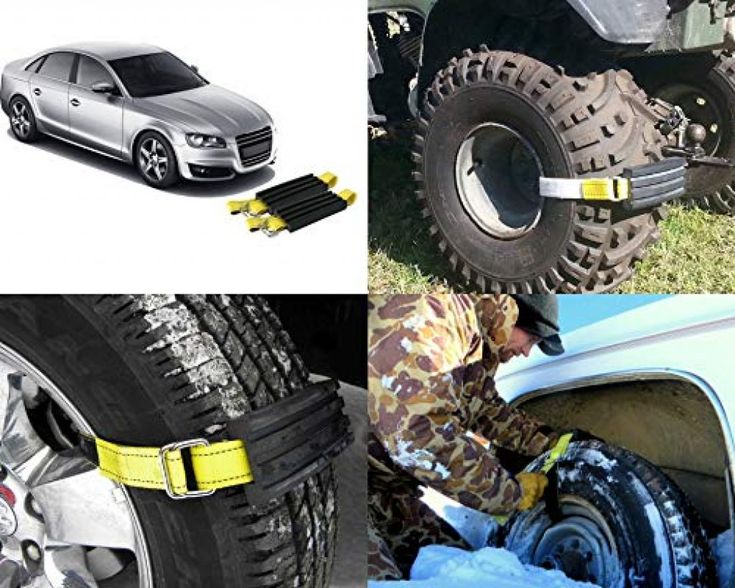 That’s all included within the $15 ‘basic installation’ cost per tire to get them installed.
That’s all included within the $15 ‘basic installation’ cost per tire to get them installed.
Although, you should take note that an added $10 charge for each tire is applied for tires that are not purchased through Walmart.
But, is that all of the services that Walmart offers? Of course not, and there’s a lot more to it than just its basic, all-in-one tire installation package. For our Walmart tire installation guide, we’ll be listing a couple more of the services offered there. This also includes some of the à la carte options if you’re not getting the entire set package.
This is an upgrade over the ‘basic’ Walmart tire installation cost that we explained to you earlier. It offers the same services overall. This includes mounting the tire, servicing the valve stems and TPMS, lifetime balancing, rotation every 7,500 miles, and a lug re-torque after 50 miles.
However, the added $10 per tire cost is owed due to the inclusion of a ‘road hazard protection’ warranty. As per Walmart, this includes covering for unforeseen road hazards and flat tire repairs. It also provides a free replacement for non-repairable tires, if you had only used up 25% of tread wear.
Walmart offers this service for any tire. You can have them rotated and balanced every 7,500 miles. This covers the life of the tires from the original date of purchase. We’ve learned earlier in our guide on Walmart tire installation costs about the importance of making sure your tires are properly aligned and balanced.
This service is provided by Walmart to charge you for the installation of valve stem covers and to service your car’s TPMS sensor. Note, that a reset of the tire pressure monitoring system (if you notice a tire sign in your car, for example) may incur additional costs.
This should allow you to better know if your tire’s pressure is, or is not running at its optimal condition in real-time. Or, it’s a good way to tell if you have a tire pressure sensor fault.
This only applies to tires that are tubeless in design. This is a structure where there is no air tube inside of the tire itself. Instead, the air is retained within an air-tight seal between the tire, and the rim itself. Depending on the damage, it can be repaired, rather than needing a full replacement.
This charge is only for mounting the tires onto the rim of the wheel and then onto the car. Unlike the full installation package offered by Walmart, this doesn’t have any add-on services as mentioned above.
If you don’t need a full tire alignment or balancing, then Walmart also offers a service just for rotation.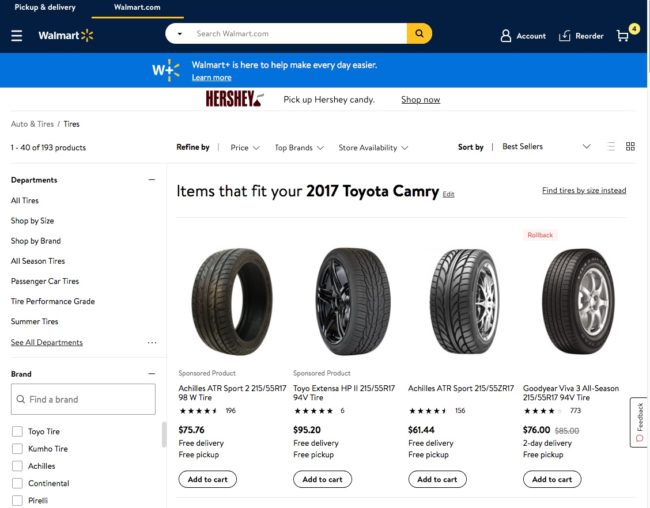 This is simply rotating the tires to a different location on the vehicle. For example, switching out the front and rear tires.
This is simply rotating the tires to a different location on the vehicle. For example, switching out the front and rear tires.
Lug nuts are what keep the tires in place on your car. As per the strain caused on the lug nuts, they can sometimes break and wear out. Or, it might have fallen off while driving, or have gone missing.
In addition to getting new tires at Walmart, you’ll then have to think about getting rid of your old ones. If you’d rather not have to deal with it yourself, you could hand it over to Walmart. In return, Walmart will require that you pay a tire disposal fee to Walmart.
This fee ranges from $5 to $25. The costs will go towards Walmart sorting out the recycling process for your old tires, upon having replaced them. Note, this disposal fee isn’t set by the government, but it’s a fair price that Walmart has determined to best reduce excess waste.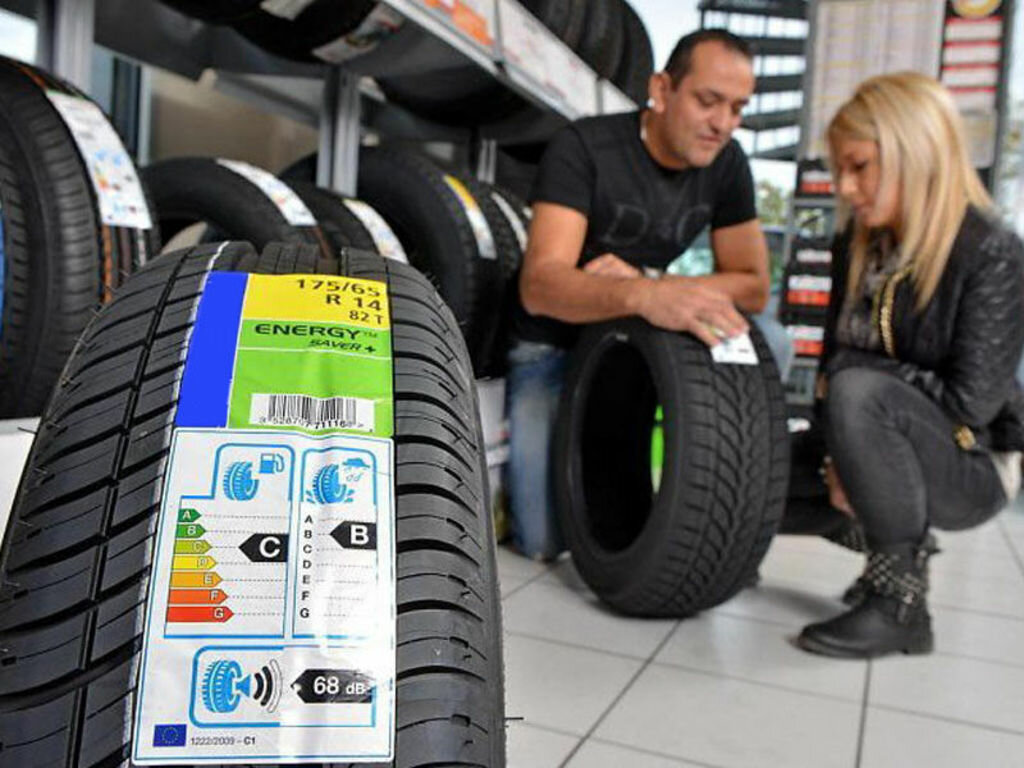
If those tires that you’ve bought from Walmart have any issues with compatibility (make sure you refer to a tire size chart for optimal fitment) or otherwise, there is an option to return them. Walmart’s return policy for its tires states that tires are returnable within 90 days. However, there are some caveats to this.
Firstly, the tires need to be new, have been bought from Walmart, and must be fresh. In other words, if those tires have been mounted, installed, and driven on already, they can’t be returned. Moreover, you also need to process the returns at a Walmart location that has an Auto Care Center.
One advantage to paying up for a Walmart tire installation cost is that you get a chance to have that covered under a warranty. Walmart currently offers 2 warranty plans for tires. The first is a Road Hazard warranty, costing you $10 per tire (or $40 for the whole car).
This plan will cover unforeseen tire damage, such as getting a flat tire. They then feature a Lifetime Balance warranty, costing you $14 per tire, or $56 for the whole car.
They then feature a Lifetime Balance warranty, costing you $14 per tire, or $56 for the whole car.
Now, we’ve understood in general what you can expect from a Walmart tire installation cost. But before paying to have the tires installed, you first need to buy them. So, you might wonder then what sort of tires can you buy at Walmart. In short, you can buy almost any sort of tire at Walmart.
Walmart’s store page lists over 1,000 different tires for sale. It covers everything from economical tires for your hatchback, or a hardy and rugged tire for off-roading. And it’s not just regular consumer cars either. Walmart sells tires for heavy-duty trucks, trailers, ATVs, golf carts, lawnmowers, tractors, and even boats.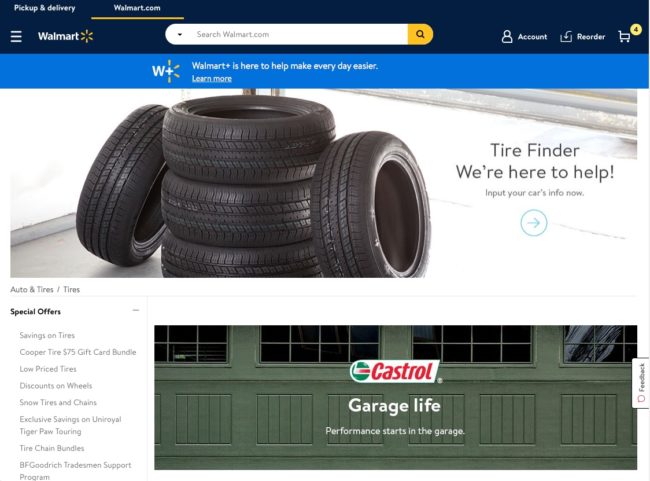
This is alongside being able to filter out tire loads, treadwear warranty, terrain, and so on. They also sell tires from dozens of different major brands. So, expect the typical Firestone, Goodyear, Toyo, Yokohama, Continental, Pirelli, Michelin, Falken, Bridgestone, Dunlop, Hankook, Kumho, BF Goodrich, and so, so much more to choose from.
Thankfully, the Walmart store page very conveniently offers a simple solution to make choosing tires easier. You can select the model year, make, and model of your car. This way, Walmart will handily filter out only the tires that are best suited for your particular car. There is, however, another important consideration that can get overlooked when buying tires.
This is regarding the particular type of tire that you’re planning to fit, depending on the use and weather conditions. For our Walmart tire installation guide, we’re going to list some of the more common types of tires, so you’ll hopefully be more aware the next time you go tire shopping.
As the name suggests, summer tires are formulated to best work in warmer climates. Their rubber provides greater traction and handling in both dry, and wet conditions. Summer tires are well-liked for their ability to make the best use of your car’s performance and agility.
Summer tires also have reduced rolling resistance. This results in better fuel efficiency, and quieter road noise. However, summer tires harden when surrounding temperatures drop below 45°F (7°C). Thus, they have significantly reduced traction under colder, or snowy conditions.
In contrast to summer tires, winter tires can work best in cold, snowy, or wet conditions. This is owing to the special compound of the rubber that doesn’t harden when it’s cold. The rubber can stay flexible, thus allowing your car better traction in colder climates.
It also has deeper grooves to provide better grip when there’s a lot of snow or grime on the road surface. However, winter tires are far too soft for use during warmer weather. This means that using winter tires when it’s hot outside will lead the tire to wear out quicker. Moreover, the increased rolling resistance will lead to higher fuel consumption and more road noise.
However, winter tires are far too soft for use during warmer weather. This means that using winter tires when it’s hot outside will lead the tire to wear out quicker. Moreover, the increased rolling resistance will lead to higher fuel consumption and more road noise.
All-season tires are a compromise between summer and winter tires, to have the benefits of both rubber compounds. With all-season tires, your car can work best in any condition. This is especially if you live in parts of the world where the climate can be more unpredictable.
Or, if you don’t have the money or storage space to afford both summer and winter tires. All-season tires mean that you needn’t have to choose between either one. However, summer and winter tires do have increased benefits in their most extreme conditions, compared to the hybrid all-seasons.
Run-flat tires are unique in that they allow you to keep driving, even with a puncture or a complete loss of pressure.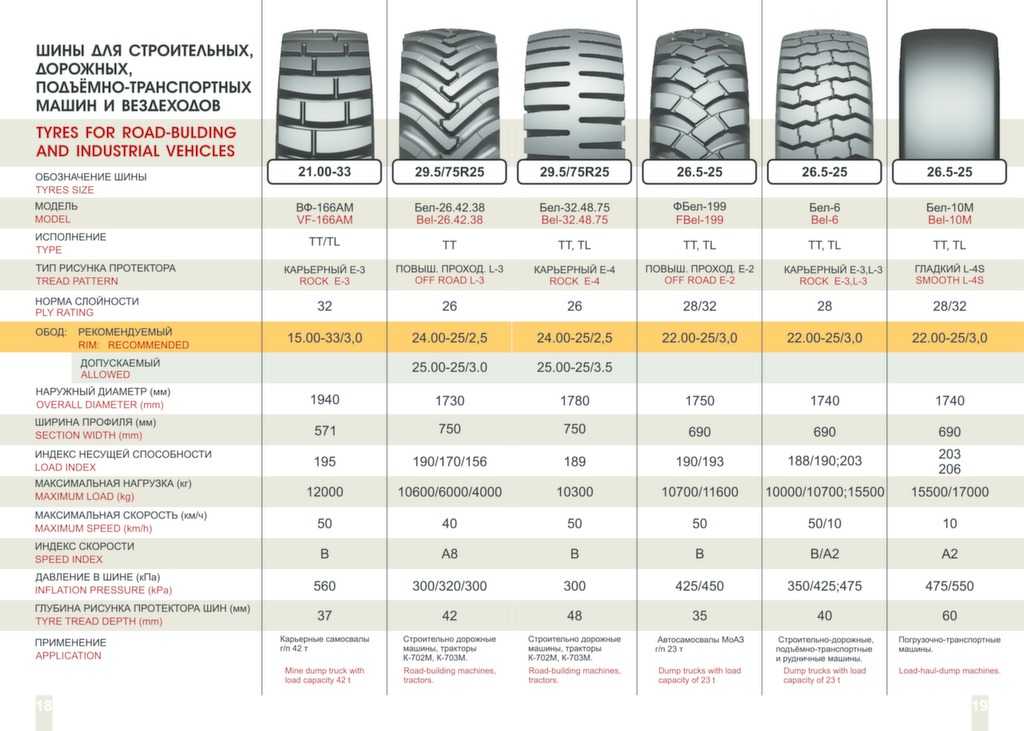 This is owing to the use of thick, reinforced sidewalls along the surface of the tire. Thus, helping to minimize tire sidewall damage. Even when the tire is completely flat, you can still drive on top of the reinforced tire sidewall temporarily.
This is owing to the use of thick, reinforced sidewalls along the surface of the tire. Thus, helping to minimize tire sidewall damage. Even when the tire is completely flat, you can still drive on top of the reinforced tire sidewall temporarily.
In general, you can still keep driving at a limited speed, and with a distance of up to 50 miles with a punctured run-flat. This has the benefit of increased safety, as you can keep driving the car until you’ve made it safely to the nearest workshop or service center.
However, you cannot have run-flat tires repaired. This means that a punctured run-flat (such as what happens if you’re driving with a nail in the tire) needs to be replaced completely.
We’ve already learned how much does a Walmart tire installation cost. But now, it’s time to figure out the cost of the tires themselves, and how much Walmart is selling them for.
This is highly dependent on what sort of vehicle you’re driving. For example, you can get tires for a normal passenger car, such as a hatchback or sedan, at Walmart for as little as $30 per tire.
For example, you can get tires for a normal passenger car, such as a hatchback or sedan, at Walmart for as little as $30 per tire.
However, tires for heavy-duty vehicles, like pickups and SUVs, can cost at least $100 minimum. Again, you can use the Tire Finder tool on Walmart to find the exact one to match your car.
It’s also worth noting that Walmart often has sales and discounts available. At the time of writing this Walmart tire installation cost guide, Walmart is offering several sales, giving away rebates and redemptions on tire purchases.
So far, we’ve learned the specific expense of getting a car’s tires mounted at Walmart. To further guide you in knowing more about Walmart tire installation costs, we decided to pit it against some of its competitors. We’ve compiled a list here comparing Walmart’s tire services, compared to other big-box retailers and more dedicated tire centers.
This is according to data compiled by Consumer Reports based on the experiences of over 30,000 consumers, showing not just the average cost of a tire, but also the average installation costs.
| Retailer | Average Purchasing Cost Per Tire | Average Installation Cost Per Tire |
|---|---|---|
| Walmart | $102 | $15 |
| Costco | $165 | $14 |
| Tire Rack | $161 | $24 |
| Lee Schwab | $179 | $22 |
| Discount Tire | $144 | $19 |
| America’s Tires | $167 | $21 |
| Amazon | $110 | $22 |
| Sam’s Club | $139 | $15 |
| Goodyear Auto Service | $161 | $25 |
From this data alone, we can see that Walmart is indeed the most affordable when it comes to buying and installing tires. However, it’s also worth considering that these are average buying prices.
Competing retailers may also offer their own discounted tires and services, which might make them cheaper than Walmart.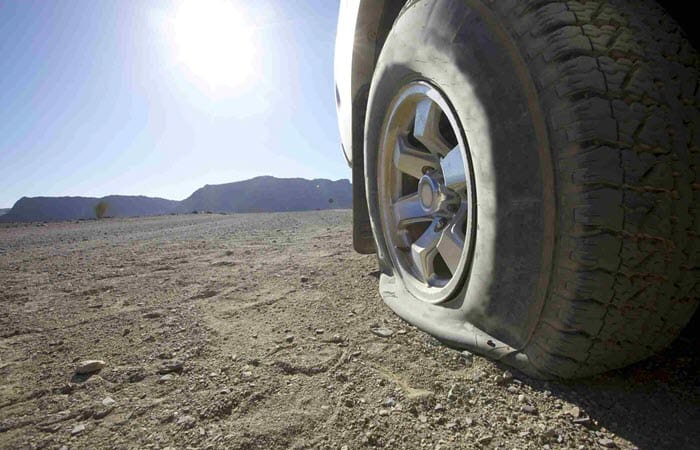 So, be sure to browse around between retailers to make sure you get the best deal when the time comes.
So, be sure to browse around between retailers to make sure you get the best deal when the time comes.
If you are looking at Costco for tires, don’t forget their fuel is already a good price also. Just make sure you keep yourself updated on how much is gas at Costco, every now and then.
We can finally come to the conclusion of our Walmart tire installation guide. Hopefully, you’ve been able to learn a thing or two about tires, which ones to buy for your car, and how does it cost to have them installed.
Moreover, you’re also now better informed that you’ve gone through our guide here. There are countless different retailers (such as BJ’s, which also sells gas, among other things), garages, and specialists that offer services for tires.
In the end, it’s up to you, the consumer, to choose which one is best for you. Our best recommendation is for you to have a quick glance at the retailers’ respective web pages.
Browse through, and compare the pricing of the tires that best suit your car and your needs. And consider not just the costs, but the convenience for you depending on where you live.
Walmart has an upper hand, owing to its large network of automotive service centers. Furthermore, the economies of scale have allowed them to generally undercut their competition in terms of pricing, and options.
Thus, we can conclude from our Walmart tire installation guide quite pleasingly that Walmart is a pretty good all-in-one stop if you need to have your tires replaced. Plus, you can get groceries while the car’s tires are being looked after.
If you want to know more about the wheel alignment cost at Walmart, read our guide. Also, we’ve written up another guide on the oil change cost at Walmart, too.
If you still have some unanswered questions concerning a Walmart tire installation cost, our FAQs here might help…
Seeing that tires are a regular maintenance item, many have wondered if Walmart does oil changes, too.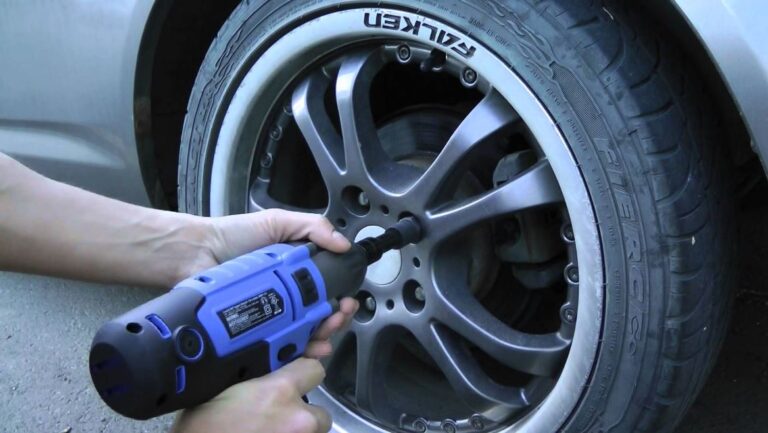 Indeed, oil changes are a staple of Walmart’s Auto Care Centers. Walmart offers a basic Pit Crew oil change for $24.88, though this doesn’t include any oil filter swaps and uses conventional oil. For a standard oil change, you’re looking at $34.88, once again using conventional motor oil. A step up would be high-mileage oils, setting you back $44.88, and using specialty engine oils for high-mileage engines. At the top end of the spectrum, Walmart offers both semi-synthetic and synthetic oil changes. They cost $44.88 and $54.88, respectively.
Indeed, oil changes are a staple of Walmart’s Auto Care Centers. Walmart offers a basic Pit Crew oil change for $24.88, though this doesn’t include any oil filter swaps and uses conventional oil. For a standard oil change, you’re looking at $34.88, once again using conventional motor oil. A step up would be high-mileage oils, setting you back $44.88, and using specialty engine oils for high-mileage engines. At the top end of the spectrum, Walmart offers both semi-synthetic and synthetic oil changes. They cost $44.88 and $54.88, respectively.
Yes, Walmart’s Auto Care Centers do offer wheel alignment services. However, it’s worth mentioning that only a select few Auto Care Center locations have the tools and skills to work on alignments. Therefore, it’s best to give them a call and ask if your local Walmart offers wheel alignments. Getting it done at Walmart is relatively cheap, as well. Front-wheel alignments at Walmart will cost around $30 to $65.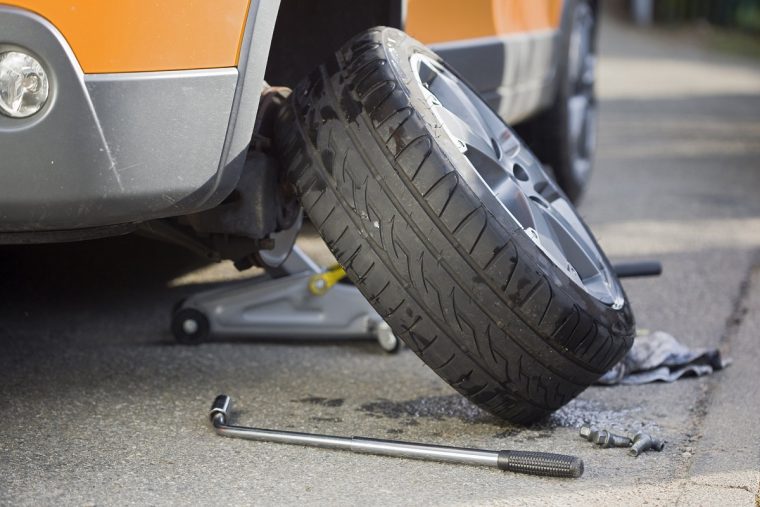 Meanwhile, a full four-wheel alignment will set you back around $70 to $80 at Walmart.
Meanwhile, a full four-wheel alignment will set you back around $70 to $80 at Walmart.
Besides worrying about a Walmart tire installation cost, you may also consider tire repairs being done there. They offer a flat tire repair service (for tubeless tires), at a cost of $15 per tire.
Walmart has one of the largest workshop chains in the US, with more than 2,500 Auto Care Centers across the country. In fact, many Walmart retail outlets have an Auto Care Center right next door, which is convenient if you need to get your car patched up in a pinch. You can use Walmart’s store finder to locate the nearest Auto Care Center.
If you need to ponder over a Walmart tire installation cost, you should first take a look at the opening and closing hours of your local Auto Care Center. Most Walmart Auto Care Centers are open 7 days a week, from 7 am to 7 pm. However, with the COVID-19 pandemic around, these hours may fluctuate. It’s best to pop open Google Maps, and note the opening and closing hours stated there for your nearest Auto Care Center. And just to make sure, give them a call to see if they’re still open.
It’s best to pop open Google Maps, and note the opening and closing hours stated there for your nearest Auto Care Center. And just to make sure, give them a call to see if they’re still open.
An oil change at Walmart is fairly cheap relative to most other service centers. The most basic oil change service costs as little as $24.88 for their Pit Crew package. This is going to get you up to 5 quarts of conventional oil, with a new oil filter installed, and some other services such as checking the battery and tire pressure. If that’s rather a bit too basic, you can opt for a standard oil change. At Walmart, that’ll cost you $34.88. Meanwhile, high-mileage oils, made for vehicles with over 75,000 miles, will cost you $44.88. For that same price, you could also get a semi-synthetic oil change for $44.88. Or, step it up to a full synthetic oil change for $54.88.
Besides tire installations, Walmart also does tire alignments, as well. It’s worth noting that not all Walmart locations offer tire alignments, as specialized equipment, as well as tools and expertise, are required. Therefore, it’s a good idea to call up a local Walmart Auto Care Center beforehand and make sure that they can do alignments before heading out. If so, wheel alignments at Walmart are comparatively well-priced compared to a traditional tire shop. The price will vary depending on your vehicle and the specific amount of time required to align it. Usually, front-wheel alignments will cost you $30 to $65, while four-wheel alignments will cost $70 to $80.
It’s worth noting that not all Walmart locations offer tire alignments, as specialized equipment, as well as tools and expertise, are required. Therefore, it’s a good idea to call up a local Walmart Auto Care Center beforehand and make sure that they can do alignments before heading out. If so, wheel alignments at Walmart are comparatively well-priced compared to a traditional tire shop. The price will vary depending on your vehicle and the specific amount of time required to align it. Usually, front-wheel alignments will cost you $30 to $65, while four-wheel alignments will cost $70 to $80.
The cost of new tires will vary widely based on countless factors. Mainly, it concerns the quality of the tires that you’re getting. For instance, if you want to install a set of high-performance track-ready tires or heavy-duty off-road tires, it’ll naturally cost you more than a set of economy-grade tires. It’s hard to provide an accurate estimate but in general… Entry-level and budget-friendly tires for most passenger cars will cost you between $50 to $150 each.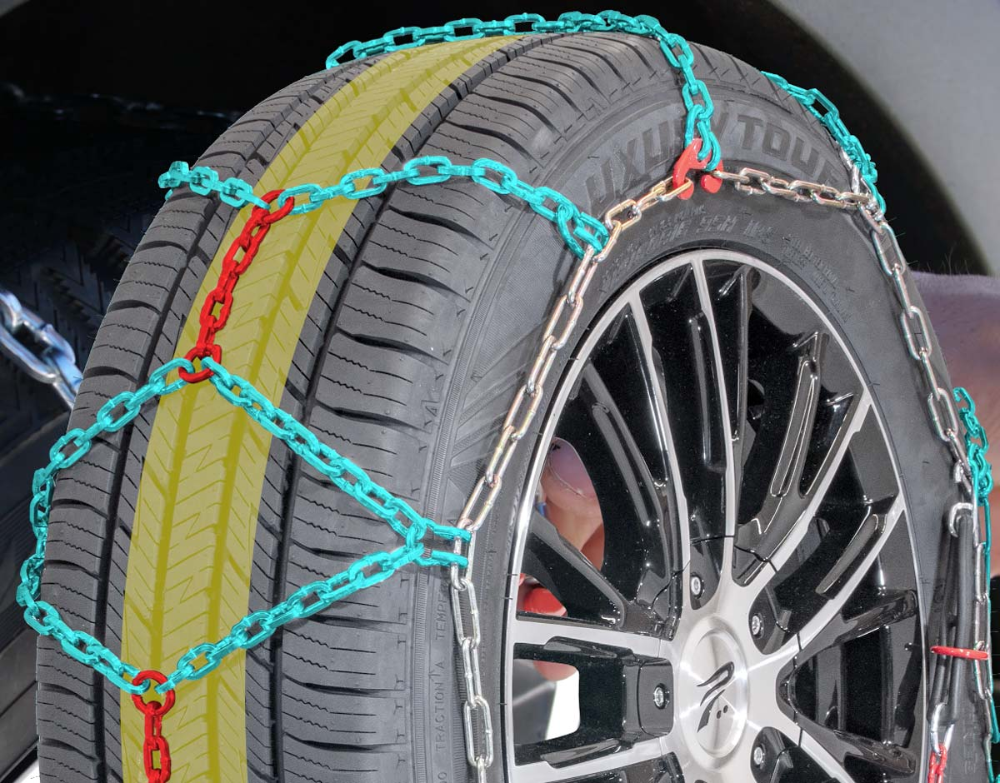 Meanwhile, mid-tier tires, which are of decent quality, would likely set you back between $100 to $300 each. On the other hand, specialty tires can easily be at least $300 or sometimes upward of $1,000 each.
Meanwhile, mid-tier tires, which are of decent quality, would likely set you back between $100 to $300 each. On the other hand, specialty tires can easily be at least $300 or sometimes upward of $1,000 each.
Yes, Walmart does offer services to help you install or mount tires onto your vehicle. They have numerous packages that offer additional services, such as balancing, rotation, TPMS servicing, and so on. However, you could also opt for a simple tire installation cost, instead. At Walmart, a simple tire mounting process will set you back $15 per tire. However, this only applies if you’ve bought those tires at Walmart. You otherwise have the option of bringing in tires that you purchased elsewhere and having Walmart’s staff do the installation at their Auto Care Centers. Although, this will cost you an additional $10 fee per tire. So, that’s $25 per tire if it’s bought outside of Walmart.
At the moment, no, Walmart doesn’t offer any brake-related services. For the most part, Walmart only manages simpler types of automotive maintenance tasks, such as oil changes or tire installations, in addition to replacing your battery, and so on. It’s a shame, as they used to offer brake pad replacement services, but they no longer offer this. For now, you could still buy brake-related parts, such as brake pads, at their stores. There’s also another consolation – Walmart’s at-home brake service. With this, you could buy brake components on their online store, and schedule an appointment, where a professional mechanic courtesy of Wrench mobile mechanic services will come to your home to install them on your car.
For the most part, Walmart only manages simpler types of automotive maintenance tasks, such as oil changes or tire installations, in addition to replacing your battery, and so on. It’s a shame, as they used to offer brake pad replacement services, but they no longer offer this. For now, you could still buy brake-related parts, such as brake pads, at their stores. There’s also another consolation – Walmart’s at-home brake service. With this, you could buy brake components on their online store, and schedule an appointment, where a professional mechanic courtesy of Wrench mobile mechanic services will come to your home to install them on your car.
These tools have been tried and tested by our team, they are ideal for fixing your car at home.
Tags: Ad/balancing/care/comparison/DIY/Guide/installation/Lug Nut/maintenance/repair/Replacement/Replacement Cost/rotation/Service/Servicing/tire/tire balancing/Tire Pressure/tire rotation/tires/tpms/walmart
Most people get nervous when it’s time to get a new set of tires. You know tires aren’t cheap, but just how much can they cost? And it doesn’t stop here: there are additional service costs, tire disposal fees, installation costs, and road hazard warranty, all of which can make a significant dent in your wallet.
You know tires aren’t cheap, but just how much can they cost? And it doesn’t stop here: there are additional service costs, tire disposal fees, installation costs, and road hazard warranty, all of which can make a significant dent in your wallet.
The average cost of tires and installation for economy and sedan cars ranges from $50 to about $75. For sports cars and SUVs, the price jumps significantly to somewhere between $100 and $300 a piece and can even go higher sometimes.
I’ll take you through the process of tire change, balancing, and installation in the next segment of this article. This will help you better understand what goes into a tire change and why professionals charge so much for the service.
» QUICK NAVIGATION «
The price for new tires and installation has changed over the years. Tires have become more complicated, and the automotive industry regulations are changing rapidly. The discontinuation of lead wheel weights, the adoption of improved tire pressure monitoring systems, and the craving for larger stylish rims have made the process even more complicated and pricey.
You can’t install economy or sedan car tires on a sports vehicle, nor can you install SUV tires in a pick-up truck. Based on a car’s rim size, suspension system, and volume, you’ll have to look for specifically sized tires. Moreover, manufacturers recommend specific tire sizes and types, and you should stick to their recommendations if you want to avoid causing severe damage to your car. Remember, each tire size and type has its price tag.
Your best bet in estimating how much the tires and installation will cost would be to contact your mechanic with your exact tire size and type for a price estimate. But what entails the entire tire installation service? And how much does each process cost?
Once you’ve determined that it’s time for new tires, you’ll want to know the correct tire size for your car. You can check your car’s door jamb for tire size information in the car’s manual. Ensuring your tire replacements match the manufacturer’s instructions requires your understanding of how tire size works. The string of numbers you rarely pay attention to on your tires contains tire size information.
The string of numbers you rarely pay attention to on your tires contains tire size information.
Assume the string of numbers and letters on your tire walls is P 225/70R16 91S. Each of these numbers and letters stand for the following:
 In this case, the rim has a diameter of 16 inches (406.4 mm). Wheel diameters range between 13 inches (330.2 mm) to 24 inches (609.6 mm).
In this case, the rim has a diameter of 16 inches (406.4 mm). Wheel diameters range between 13 inches (330.2 mm) to 24 inches (609.6 mm).If you want to change your tire size and type, consult an expert for advice. As you’ve already seen, different tire options have varying load capacities and require different rim widths and diameters.
Of course, I don’t want to delve deeper into the science of tires, so I’ll only focus on the cost aspect: different tire sizes and types will be priced differently.
Below is a table giving cost estimates of the different tire types and sizes:
| Wheel size | All-Season (Average Price) | All-Terrain (Average Price) |
| Small (12”-15”) | $50-$150 a piece | _ |
| Medium (16”-20”) | $100-$250) a piece | $150-$250 |
| Large (18”-26”) | $150-$400 a piece | $200-$1000 |
Regular tire mounting cost is no different across various automotive repair shops.
A professional tire installation service entails professional mounting, installation, and wheel balancing. Proper wheel balancing guarantees optimum tire life and your car’s safety. Incorrectly balanced tires cause unpleasant vibrations and make your tires and suspension wear prematurely.
You may also like to check: How Much Does Walmart Charge for Tire Installation?
When you take your car into an auto repair shop, the mechanic starts by unscrewing the wheels from your car. At this point, the mechanic can quickly inspect your brake and suspension systems, but this shouldn’t replace full brakes and suspension system inspections.
The technician should also inspect the condition of the wheel studs and lug nuts to ensure that the wheel is secured safely and firmly. You shouldn’t pay for this; it’s part of the installation.
Once the technician removes the wheel, the next step should be to remove the tire from the wheel (rim).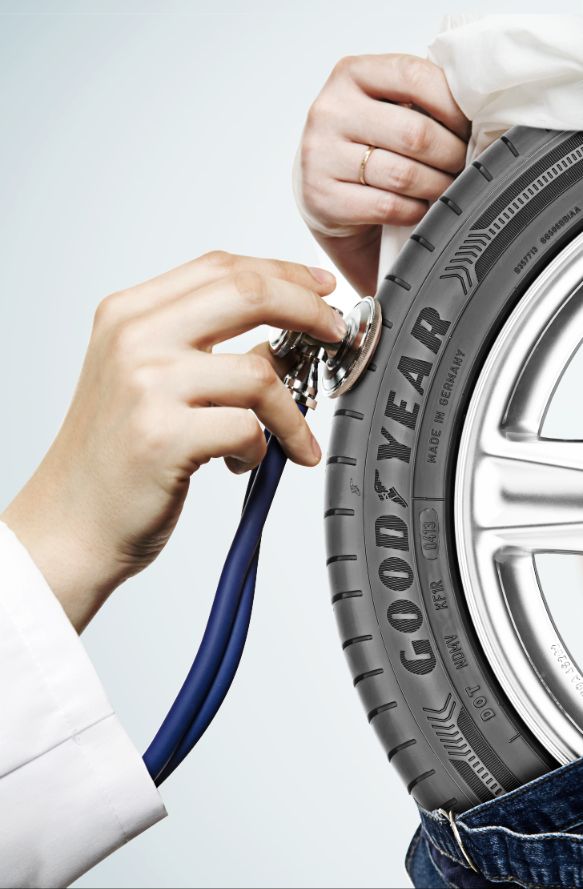 Specialized equipment is needed. The process isn’t for the hands of your regular home mechanic.
Specialized equipment is needed. The process isn’t for the hands of your regular home mechanic.
First, the technician removes balancing weights and the valve system to deflate the tires. Next, the mounting machine presses the tire out of the wheel, and the mechanic pulls and pries at the tire to carefully detach it from the rim.
The mechanic inspects the wheel for potential damage and cleans it of dirt and debris. Defects to the wheel may affect how well it bonds with the tire and how it will balance when mounted back to the car. The mechanic should also thoroughly clean bead areas where the tire touches the rim.
Newer car models feature a tire pressure monitoring system to keep tabs on air pressure in the tires. The technician should inspect and service the TPMS sensors with new seals for smooth operation. Check whether the TPMS serving cost is included in the installation fee. If not, the TPMS service kit should cost $5-$10 per wheel.
If not, the TPMS service kit should cost $5-$10 per wheel.
Sometimes the sensors will be faulty and will need replacing. In most cases, TPMS sensor replacement cost isn’t included in the installation fee. TPMS pressure sensors’ cost ranges from $50-$250, depending on your car model.
The technician will then use a tire mounting machine to press the tire bead over the rim, replace the valves, inflate the tire, and check for leaks. The technician should be careful not to damage the TPMS sensors.
Imbalanced wheels impact your driving experience by causing excessive vibrations, accelerating tire wear, and causing possible damage to the undertrain or suspension system.
The next (and one of the most important steps) is wheel balancing. The technician will use a tire assembly balancing machine to spin the assembly at high speed to detect heavy spots. The machine will pause the spin at the exact spot where weights are needed to balance the wheel. The mechanic will repeat the process until the whole tire assembly is balanced.
The mechanic will repeat the process until the whole tire assembly is balanced.
Again you should check whether the wheel balancing cost is included in the installation fee. Some repair shops offer a complete package, which is higher than the standard wheel installation cost, and some don’t. Depending on your location and car, you can expect to pay between $40 and $75 for balancing all four wheels.
The technician will then mount each wheel assembly back to the car and torque the lug nuts to the correct tightness. This process is naturally included in the service fee, and you shouldn’t be expected to pay anything extra. While still on the service bay lift, you can request wheel alignment.
The technician may also recommend an alignment. Wheel alignment, also known as breaking or tracking, is standard automobile maintenance that involves adjusting the vehicle’s wheel angles back to the automaker’s specifications. Wheels’ alignment angle refers to the wheel’s angle to each other and the vehicle’s body.
Wheels’ alignment angle refers to the wheel’s angle to each other and the vehicle’s body.
Misaligned wheels cause unnecessary wear to the steering, brakes, tires, and suspension. Aligning your wheels will improve the vehicle’s stability, maximize tire life, and improve car handling performance.
It would be best to have your wheels aligned every 6000 miles (10,000 km) or when you start feeling changes in the driving experience or ability to handle the car.
If you lost track of your alignment schedule, make sure you align your wheels if you experience the following:
If wheel alignment isn’t part of the installation package, you can request for the same or if the mechanic sees it fit.
The cost of front-end alignment, which typically involves the two front wheels only, can cost anywhere from $50 to $75. All-wheel alignment costs more, typically from $100 to $150. You can expect to dig your pockets deeper if you own a luxury car.
All-wheel alignment costs more, typically from $100 to $150. You can expect to dig your pockets deeper if you own a luxury car.
This Youtube video explains the difference between wheel balancing, rotation, and alignment.
After rechecking everything, the mechanic will lower your car from the lift. Once on the ground, the technician can use a torque wrench to recheck the lug nuts’ tightness to ensure the wheels are stable and firmly fixed as they should be.
Moreover, the tire pressure should be set to correct levels as recommended by the manufacturer on the tires’ placard.
Tire retailers offer a road-hazard warranty to cover you with prorated discounts if your tire is damaged. The warranty comes for a small fee, which might or might not be included in the installation cost.
The warranty comes for a small fee, which might or might not be included in the installation cost.
On the other hand, tire manufacturers offer mileage warranties to guarantee that you won’t have to replace the tires before a specific mileage. Typical mile range is 20,000-80,000 miles.
In return, you must align your wheels regularly and perform rotational maintenance so that the tires don’t wear out prematurely. High-mileage warranty will cost more but will be beneficial if you drive a lot. However, not all tire makers offer mileage warranties, so you’ll want to ask about this when choosing the make of your tire replacement.
Tires are hazardous waste, and disposing of your worn-out tires will cost you anywhere from $2 to $6. The cost varies depending on whether you dump them off at a recycling facility or pay a tire dealer to dump them for you. You can also generously donate them to someone who needs them.
Your busy schedules shouldn’t stop you from checking your tires thoroughly for wear and damage. But how would you know they need replacing?
But how would you know they need replacing?
You can try this Steelman Digital Tire Tread Gauge available on Amazon.com. It reads tread depths from 0-25mm or 0-1 inch.
A lot goes into maintaining a car, and taking care of your tires is an essential part of the process. They are the components that carry the vehicle and are thus prone to wear and damage.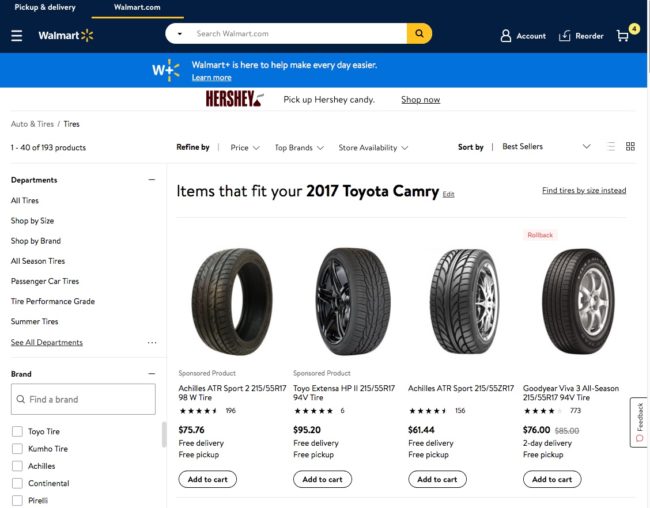
Replacing tires costs money, as does maintaining your car’s suspension system. The cost of replacing and installing new tires will depend on your car’s tire size and type. And, of course, your car model matters too.
RELATED POSTS:
SHARE ON:
Price list for tire services for passenger cars
| Cost of standard service packages (for 4 wheels) | |||||||||||
| No. | description | 13 | 14" | 15” | 16” | 17” | 18” | 19” | 20” | 21” | 22” |
| 1. | Price per set (profile 55 and above) |
950 |
1100 |
1300 |
1500 |
1700 |
1900 |
2100 |
2000 |
2700 |
2900 |
| 2. | Coefficient for low profile tires profile 50 and below/SUV/commercial vehicles | + 20 | |||||||||
| Prices for tire fitting services (for 1 wheel) | |||||||||||
| No. | Name of work | 13 | 14” | 15” | 16” | 17” | 18” | 19” | 20” | 21” | 22” |
| 1. | Removing and installing wheel | 60 | 80 | 90 | 120 | 150 | 160 | 160 | 170 | 190 | 200 |
| 2. | Removing the tire from disc | 60 | 80 | 90 | 100 | 100 | 140 | 140 | 170 | 180 | 180 |
| 3. | Mounting tire on rim | 60 | 80 | 90 | 100 | 100 | 140 | 140 | 170 | 180 | 180 |
| 4. | Balancing | 100 | 100 | 100 | 120 | 150 | 160 | 160 | 190 | 200 | 240 |
| Total: | 280 | 340 | 370 | 440 | 500 | 600 | 600 | 700 | 750 | 800 | |
| Additional services: |
|
|
| ||||||||
| 1. | Installation of weights kit (self-adhesive + stuffed) | 50 | 50 | 60 | 60 | 70 | 70 | 80 | 80 | 100 | 100 |
| 2. | Valve installation | 40/80 | 40/80 | 40/80 | 40/80 | 40/80 | 40/80 | 40/80 | 40/80 | 40/80 | 40/80 |
| 3. | Installing a customer valve | 20 | 20 | 20 | 20 | 20 | 20 | 20 | 20 | 20 | 20 |
| 4. | Checking, pumping pressure | 20 | 20 | 20 | 20 | 20 | 20 | 20 | 20 | 20 | 20 |
| 5. | Packing the wheel in a bag | 30 | 30 | 30 | 30 | 30 | 30 | 30 | 30 | 30 | 30 |
| 6. | Replacement of one spool | 20 | 20 | 20 | 20 | 20 | 20 | 20 | 20 | 20 | 20 |
| 7. | Plastic cap (1 pc.) | 20 | 20 | 20 | 20 | 20 | 20 | 20 | 20 | 20 | 20 |
| 8. | Camera installation | 50 | 50 | - | - | - | - | - | - | - | - |
| 9. | Camera repair | 100 | 100 | 100 | 100 | 100 | 100 | 100 | - | - | - |
| 10 | Sealing one side of the wheel with bead seal | 100 | 100 | 100 | 100 | 110 | 110 | 150 | 150 | 170 | 180 |
| 11 | Temporary |
100/ |
100/ |
100/ |
100/ |
100/ |
100/ |
100/ |
100/ |
100/50 |
100/50 |
| 12 | Tire repair | 150 | 150 | 150 | 150 | 150 | 150 | 150 | 200 | 200 | 200 |
Vulcanization:
|
| Consumables | Price |
| 1. | 112 patch | 500 |
| 2. | 114 patch | 600 |
| 3. | 115 patch | 700 |
WARNING! WHEN REPAIRING TIRES, THE COST OF TIRE WORKS IS CONSIDERED SEPARATELY
Is it time to switch from winter to summer tires? Come to our car service to change tires by prior online appointment.
Shesteryonka car services are equipped with modern Italian balancing equipment RAVAGLIOLIM and a tire changer CORCHI , which allows tire fitting for wheels ranging in size from 12" to 30", including for low profile tires and type 9 tires0009 Run Flat.
In addition to tire fitting and wheel balancing, you will receive high-quality services for all types of repairs, including puncture and side cut repair, as well as washing and cleaning wheels. Service centers "Shesterenka" have the status of certified services that have the right to perform tire fitting and wheel balancing.
Service centers "Shesterenka" have the status of certified services that have the right to perform tire fitting and wheel balancing.
| Cost of work | ||||||||
| R12-14 | R15 | R16 | R17-18 | R19+ comm. transport | ||||
| light | implemented | light | implemented | light | off-road | |||
| Wheel - remove/attach | 90 | 100 | 120 | 110 | 150 | 140 | 170 | 170 |
| Wheel - balancing | 90 | 100 | 120 | 110 | 150 | 140 | 170 | 170 |
| Wheel assembly | 80 | 90 | 100 | 90 | 130 | 120 | 130 | 150 |
| Wheel - removal | 80 | 90 | 100 | 90 | 130 | 120 | 130 | 150 |
| Wash wheel | 50 | 50 | 50 | 50 | 70 | 70 | 70 | 70 |
| Wheel - inflation | 25 | 25 | 25 | 25 | 25 | 25 | 25 | 25 |
| Chamber - repair | 50 | 50 | 50 | 50 | 50 | - | - | - |
One wheel conversion (excl. freight cost) freight cost) | 340 | 380 | 440 | 400 | 560 | 520 | 600 | 640 |
| 4 / 6 wheel conversion (excl. freight cost) | 1360 | 1520 | 1760 | 1600 | 2240 | 2080 | 2400 | 2560/3840 |
| Tire - repair (harness installation) | 150 | 150 | 150 | 150 | 150 | 150 | 150 | 150 |
| Tire - repair (mushroom installation) | 150 | 150 | 150 | 150 | 150 | 150 | 150 | 150 |
| Tire - repair (installation of cord patch) | 250 | 250 | 250 | 250 | 250 | 250 | 250 | 250 |
| Tire - repair (side cut up to 3 cm) | 250 | 250 | 250 | 250 | 250 | 300 | 300 | 300 |
| Seat - cleaning | 25 | 25 | 25 | 25 | 25 | 50 | 50 | 50 |
| Seat - sealing | 40 | 40 | 40 | 40 | 40 | 60 | 60 | 60 |
| Disc test (balance) | 50 | 50 | 50 | 50 | 50 | 50 | 50 | 50 |
| Hub treatment with copper grease (1 wheel) | 50 | 50 | 50 | 50 | 50 | 50 | 50 | 50 |
| Installing a non-return valve | 25 | 25 | 25 | 25 | 25 | 25 | 25 | 25 |
| Pressure sensor installation | 200 | 200 | 200 | 200 | 200 | 200 | 200 | 200 |
Please note that the price is indicated in rubles and is valid at the time of publication.